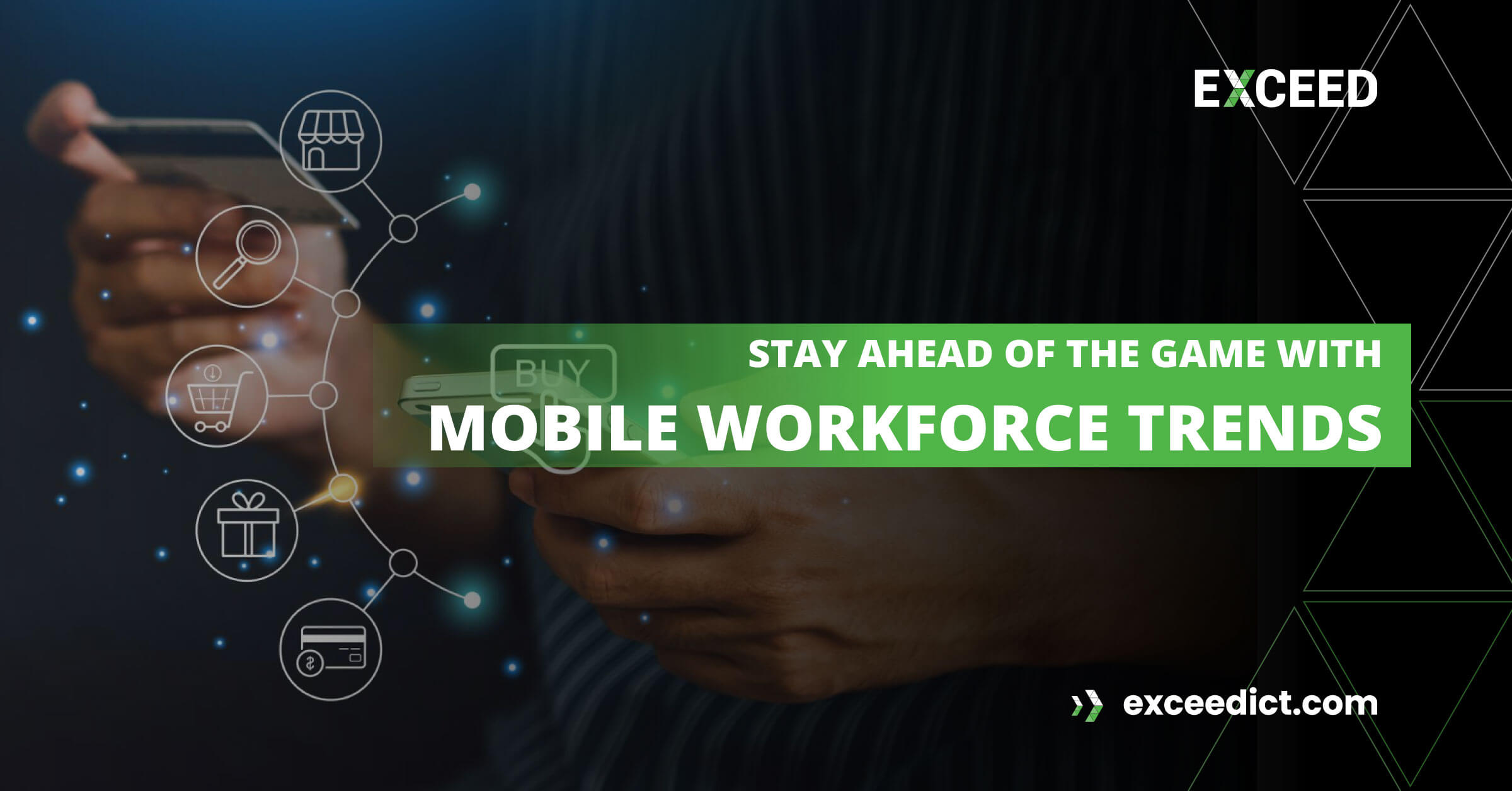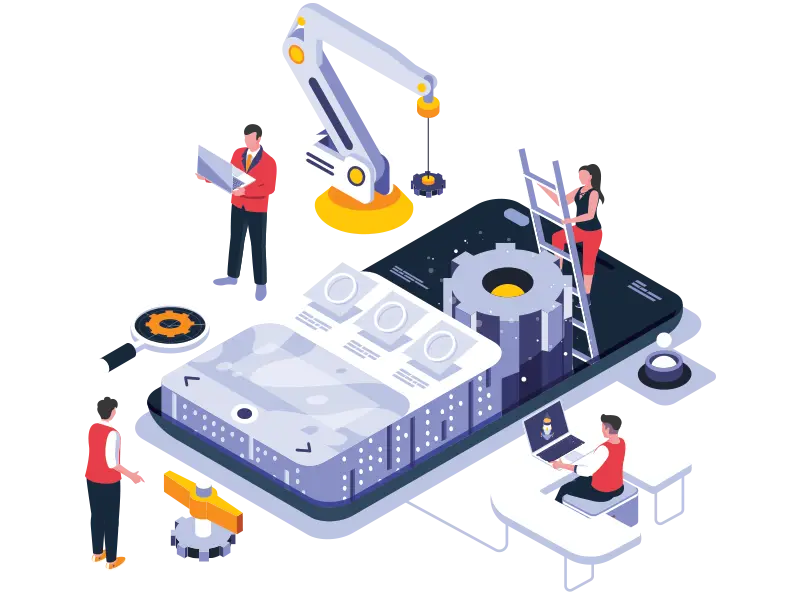
Mobile Workforce Trends
 In today’s fast-paced business environment, mobile technology has revolutionized the way we work. As more and more companies adopt mobile workforce solutions, it is becoming increasingly important to stay on top of the latest trends and developments to remain competitive. In this article, we will explore the top mobile workforce trends and provide actionable tips on how you can stay ahead of the game.
In today’s fast-paced business environment, mobile technology has revolutionized the way we work. As more and more companies adopt mobile workforce solutions, it is becoming increasingly important to stay on top of the latest trends and developments to remain competitive. In this article, we will explore the top mobile workforce trends and provide actionable tips on how you can stay ahead of the game.
The Rise of the Mobile Workforce
As more employees work remotely, the need for mobile workforce solutions has become paramount. The mobile workforce refers to employees who are not tied to a specific location and can work from anywhere with an internet connection. The rise of the mobile-workforce has been fueled by technological advancements such as smartphones, laptops, and cloud computing.
Mobile Collaboration Tools
Mobile collaboration tools are becoming increasingly important for businesses that want to stay competitive. With these tools, employees can communicate and collaborate with each other, regardless of their physical location. Mobile collaboration tools such as Slack, Microsoft Teams, and Zoom have become essential for remote teams to stay connected and work efficiently.
The Benefits of Mobile Collaboration Tools
Mobile collaboration tools offer several benefits, including:
-
- Improved communication and collaboration between team members
- Increased productivity and efficiency
- Greater flexibility and freedom for employees
- Reduced travel costs and time spent commuting
- Increased job satisfaction and employee engagement
Best Mobile Collaboration Tools
Some of the best mobile collaboration tools include:
-
- Slack: A messaging platform that allows teams to communicate in real-time and share files.
- Microsoft Teams: A collaboration platform that integrates with Microsoft Office and allows teams to chat, video conference, and collaborate on documents.
- Zoom: A video conferencing platform that enables teams to conduct virtual meetings and webinars.
Mobile Security
 As more employees work remotely, mobile security has become a top priority for businesses. With sensitive data being accessed from various devices and locations, companies need to ensure that their mobile workforce is secure. Mobile security solutions such as two-factor authentication, data encryption, and mobile device management can help mitigate security risks.
As more employees work remotely, mobile security has become a top priority for businesses. With sensitive data being accessed from various devices and locations, companies need to ensure that their mobile workforce is secure. Mobile security solutions such as two-factor authentication, data encryption, and mobile device management can help mitigate security risks.
Mobile Security Best Practices
To ensure mobile security, businesses should follow these best practices:
-
- Use strong passwords and two-factor authentication
- Encrypt sensitive data
- Implement mobile device management to manage and secure mobile devices
- Use a virtual private network (VPN) when accessing company data remotely
- Train employees on mobile security best practices
Mobile Security Solutions
Some of the best mobile security solutions include:
-
- Mobile device management (MDM): Software that allows businesses to manage and secure mobile devices used by employees.
- Mobile application management (MAM): Software that allows businesses to manage and secure mobile apps used by employees.
- Two-factor authentication: A security measure that requires users to provide two forms of identification before accessing sensitive data.
- Virtual private network (VPN): A network that enables users to securely access company data from a remote location.
Mobile Training and Development
As more employees work remotely, mobile training and development have become essential for businesses. Mobile training and development solutions allow employees to access training materials and courses from anywhere, at any time. These solutions can be customized to meet the unique needs of each employee and can help improve employee performance and productivity.
Benefits of Mobile Training and Development
Some of the benefits of mobile training and development include:
-
- Increased employee engagement and job satisfaction
- Improved employee performance and productivity
- Reduced training costs
- Greater
Best Mobile Training and Development Solutions
 Some of the best mobile training and development solutions include:
Some of the best mobile training and development solutions include:
- Udemy: An online learning platform that offers a wide range of courses on various topics.
- LinkedIn Learning: A platform that provides personalized learning experiences for employees.
- Coursera: An online learning platform that partners with top universities and organizations to offer courses and certifications.
Mobile-First Design
With the increasing use of mobile devices, businesses need to prioritize mobile-first design. Mobile-first design refers to designing websites and applications for mobile devices first, and then scaling up to larger screens. By designing for mobile first, businesses can ensure that their websites and applications are optimized for smaller screens and offer a seamless user experience.
Benefits of Mobile-First Design
Some of the benefits of mobile-first design include:
-
- Improved user experience for mobile users
- Faster loading times for mobile devices
- Reduced development costs
- Better search engine rankings
Best Mobile-First Design Practices
To implement mobile-first design, businesses should follow these best practices:
-
- Keep design simple and user-friendly
- Use responsive design to ensure that websites and applications adapt to different screen sizes
- Use mobile-friendly fonts and colors
- Optimize images and videos for mobile devices
- Prioritize content that is most important to mobile users
Frequently Asked Questions:
Q: What is mobile workforce?
A: The term “mobile workforce” refers to a group of employees or individuals who are not confined to a traditional office space and can perform their work tasks remotely using mobile devices such as smartphones, tablets, or laptops. These individuals have the flexibility to work from various locations, such as home, coffee shops, or while on the move. The mobile workforce typically relies on mobile technologies, cloud-based applications, and internet connectivity to carry out their job responsibilities.
Q: Why is mobile security important?
A: Mobile security is crucial due to the widespread use of mobile devices and the sensitive information they often store or access. Here are a few reasons why mobile security is important:
- Data protection: Mobile devices often contain sensitive information like personal data, financial details, corporate information, and passwords. Without proper security measures, this data can be compromised, leading to identity theft, fraud, or unauthorized access.
- Malware and viruses: Mobile devices are vulnerable to malware and viruses that can be introduced through malicious apps, downloads, or email attachments. These threats can compromise device functionality, steal data, or even control the device remotely.
- Network security: When using mobile devices to connect to public Wi-Fi networks, there is a risk of data interception by cybercriminals. Mobile security measures, such as encrypted connections and virtual private networks (VPNs), help protect data while connected to unsecured networks.
- Device loss or theft: Mobile devices are highly portable and can be easily lost or stolen. Without adequate security measures, unauthorized individuals can gain access to the data stored on the device, potentially causing significant harm or privacy breaches.
By prioritizing mobile security, individuals and organizations can mitigate these risks, protect sensitive information, and ensure the safe use of mobile devices.
Q: What are the benefits of mobile-first design?
A: Mobile-first design is an approach that prioritizes designing and optimizing digital experiences for mobile devices before adapting them to larger screens like desktop computers. Here are some benefits of mobile-first design:
- Enhanced user experience: As mobile devices have become the primary means of accessing the internet for many people, designing with a mobile-first mindset ensures that the user experience is tailored to smaller screens, touch interactions, and limited bandwidth. This focus on usability and simplicity can lead to improved user satisfaction and engagement.
- Responsive and adaptive design: By starting with mobile-first design, it becomes easier to create responsive and adaptive layouts that can seamlessly adjust to different screen sizes. This approach ensures that the website or application remains functional and visually appealing across various devices, providing a consistent experience for users.
- Improved performance: Mobile-first design encourages optimizing the performance of websites and applications by prioritizing essential content, minimizing unnecessary elements, and optimizing code. This results in faster loading times, reduced data usage, and smoother interactions, benefiting users on both mobile and desktop devices.
- Competitive advantage: With the increasing prevalence of mobile usage, businesses that adopt mobile-first design gain a competitive edge by catering to the needs and preferences of mobile users. Providing a seamless mobile experience can attract and retain customers, improve brand perception, and increase conversions.
- Accessibility and inclusivity: Mobile-first design often encourages a focus on accessibility and inclusivity, ensuring that digital experiences are usable by individuals with disabilities or those using assistive technologies. This approach promotes equal access to information and services, fostering a more inclusive digital environment.
By embracing mobile-first design principles, designers and businesses can create more user-friendly, responsive, and competitive digital experiences that cater to the growing mobile audience.
As the business world becomes increasingly mobile, companies need to stay ahead of the game by adopting mobile-workforce trends. By prioritizing mobile collaboration tools, mobile security, mobile training and development, and mobile-first design, businesses can ensure that their mobile-workforce is efficient, secure, and productive. Stay ahead of the game with these mobile workforce trends, and your business will be well positioned for success in the mobile age.
You may also like to know more about
- How to Defend Business against Mobile Threats with Expert Tips?
- The Future of Enterprise Mobility: Trends and Insights.
- Maximising Efficiency with Enterprise Mobility Solutions.
- The Best Enterprise Device Deployment Solutions – Streamline Your Business.
Stay connected with EXCEED ICT
Stay connected with EXCEED ICT by joining our social networks (given at footer). Get the latest updates, news, and tips for enterprise device deployment. Follow us on Twitter, Facebook, and LinkedIn for the best enterprise device deployment solutions.
Help us to improve our enterprise by rating us on Google Maps. Your feedback and comments are valuable to us and will be used to make our services even better.
Thanks visiting.



